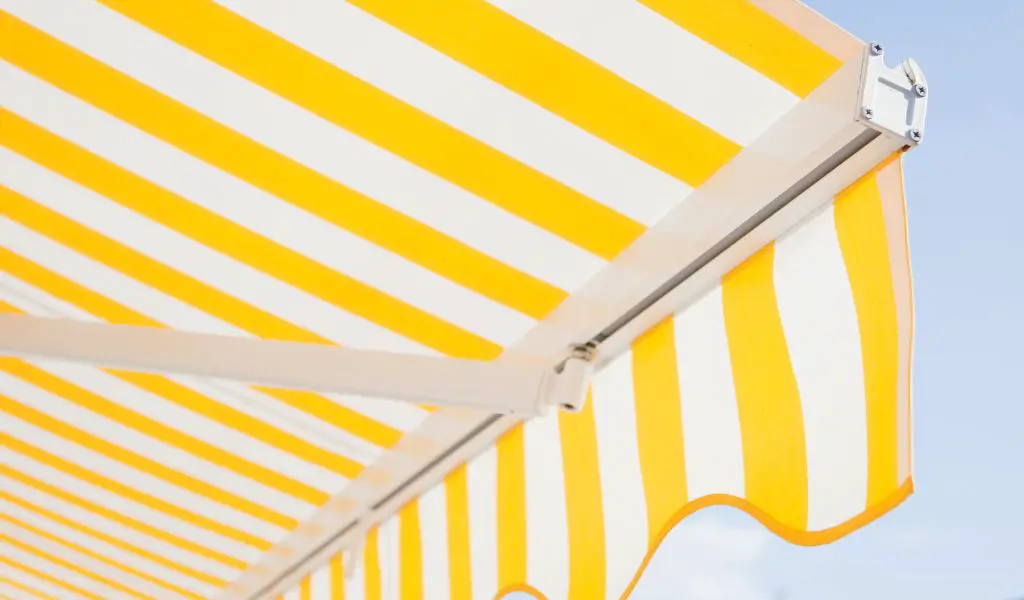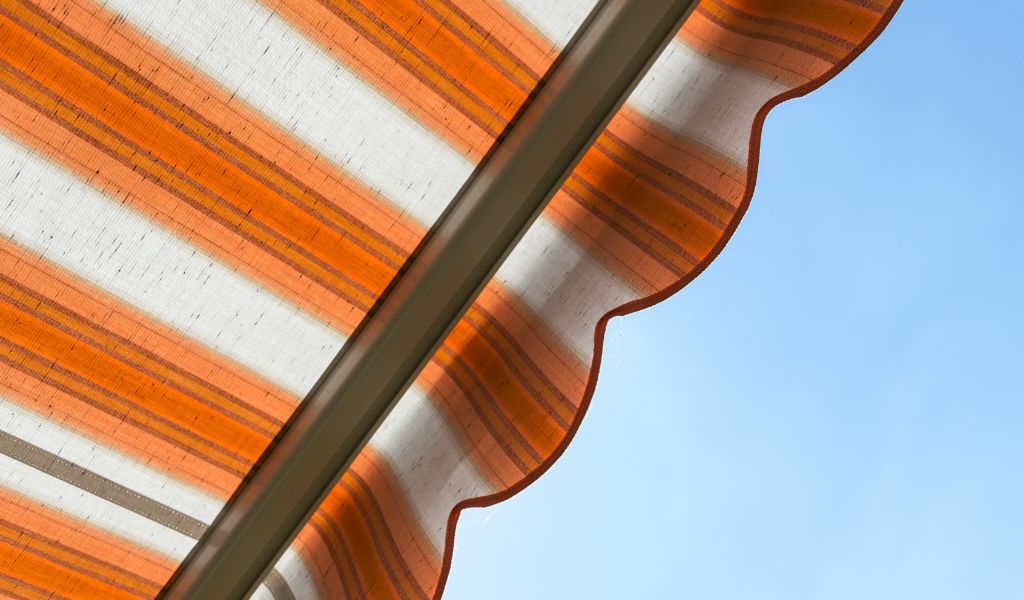If you love spending time outdoors, having an awning can be a great addition to your patio or deck and it is a great way to enjoy the outdoors while providing protection from the elements.
However, if your awning is not waterproof, you risk getting wet and ruining your outdoor furniture.
Waterproofing your awning is an easy and affordable way to ensure that it remains protected from the rain.
Why You Need to Waterproof Your Awning
If your awning is not waterproof, it will absorb water and eventually lead to mold and mildew growth.
This not only makes your awning look unsightly but can also be hazardous to your health.
Additionally, water can seep into the fabric of your awning, causing it to weaken and tear over time.
Determine if Your Awning Needs Waterproofing
The first step in waterproofing your awning is to determine if it needs to be waterproofed.
To do this, spray some water on your awning and see if it beads up or if it soaks into the fabric.
If the water soaks into the fabric, it’s time to waterproof your awning.

Materials Needed to Waterproof Your Awning
To waterproof your awning, you will need the following materials:
Waterproofing spray
Soft-bristled brush
Water hose
Bucket
Mild detergent
Clean Your Awning
Before you begin waterproofing your awning, you need to ensure that it’s clean.
Use a soft-bristled brush to remove any dirt or debris from the surface of the awning.
Mix mild detergent with water in a bucket and use a soft-bristled brush to scrub the awning.
Rinse the awning with a water hose and let it dry completely.
Apply Waterproofing Spray
Once your awning is clean and dry, it’s time to apply the waterproofing spray.
Shake the can well and hold it 6-8 inches away from the surface of the awning. Spray a light, even coat of the waterproofing spray on the surface of the awning.
Be sure to cover the entire surface of the awning, including any seams or stitching.
Let the Awning Dry
After applying the waterproofing spray, let the awning dry completely. This can take anywhere from a few hours to a day, depending on the weather conditions.
Avoid using your awning until it’s completely dry.
Test the Awning
Once the awning is dry, test it by spraying some water on the surface.
If the water beads up and rolls off, your awning is now waterproof. If the water soaks into the fabric, you may need to apply another coat of waterproofing spray.
Tips to Keep Your Awning Waterproof
To keep your awning waterproof, there are a few tips to keep in mind:
Clean your awning regularly to prevent dirt and debris from building up on the surface.
Avoid using harsh chemicals or abrasive cleaners on your awning, as they can strip away the waterproofing layer.
Consider applying a second coat of waterproofing spray every year to maintain the awning’s water resistance.
Retract your awning during heavy rain or snow to prevent any damage to the fabric.
FAQs
How often should I waterproof my awning?
It’s recommended to waterproof your awning at least once a year, especially if it’s frequently exposed to rain or snow.
Can I use any type of waterproofing spray on my awning?
No, it’s important to use a waterproofing spray specifically designed for outdoor fabrics like awnings. Make sure to read the label and follow the manufacturer’s instructions.
How do I clean my awning without damaging the waterproofing layer?
Use a soft-bristled brush and mild detergent mixed with water to clean your awning. Avoid using harsh chemicals or abrasive cleaners that can strip away the waterproofing layer.
Can I leave my awning out during heavy rain or snow?
It’s recommended to retract your awning during heavy rain or snow to prevent any damage to the fabric.
What happens if I don’t waterproof my awning?
If your awning is not waterproof, it can absorb water and eventually lead to mold and mildew growth. Water can also seep into the fabric, causing it to weaken and tear over time.
Final thoughts 💭
Waterproofing your awning is a simple process that can help protect your outdoor living space from the elements.
By following the steps outlined in this article, you can ensure that your awning remains waterproof and in good condition for years to come.




